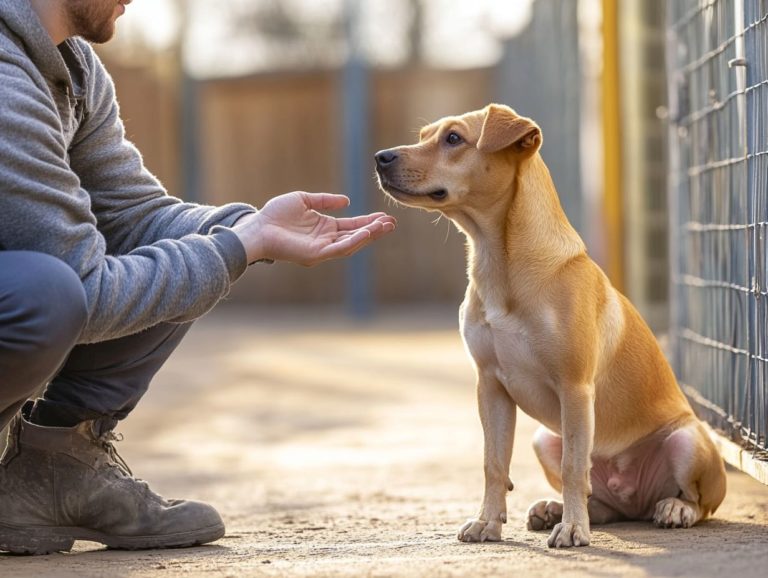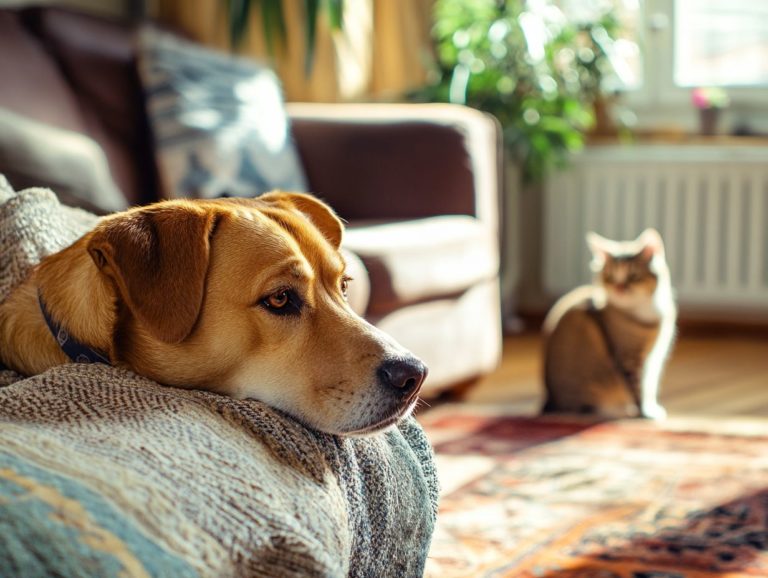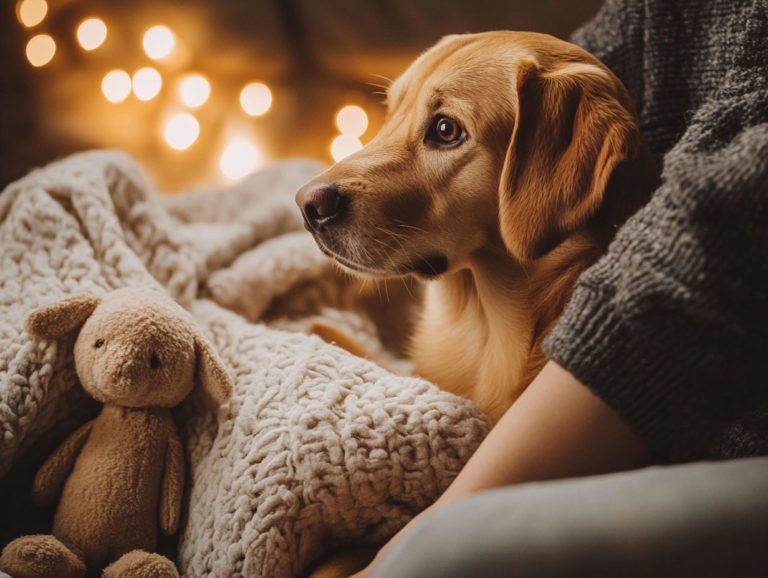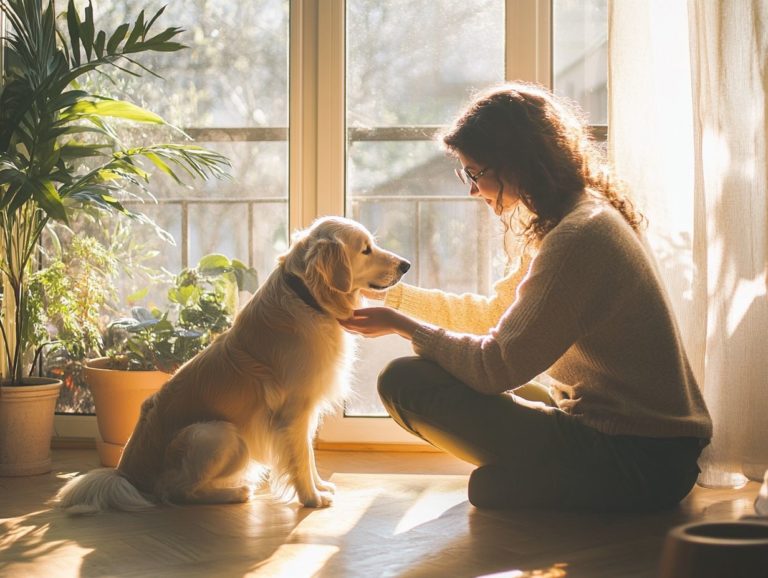How Significant is the Owner’s Role in Pet Anxiety?
Pet anxiety is more prevalent than you might think, and its effects can ripple through your household, affecting both your furry friends and the humans who care for them, including children and elderly people.
Grasping the causes, signs, and symptoms of pet anxiety is essential for nurturing a harmonious environment. Let’s dive into how various environmental factors influence your pet’s behavior, emphasize your crucial role in managing their anxiety, and provide practical techniques for crafting a calming atmosphere that enhances the benefits of pet ownership.
You ll also learn when it s time to seek professional help and discover proactive tips to fend off anxiety before it even begins, including veterinary advice. Discover how to bring peace to you and your beloved companions today!
Contents
Key Takeaways:
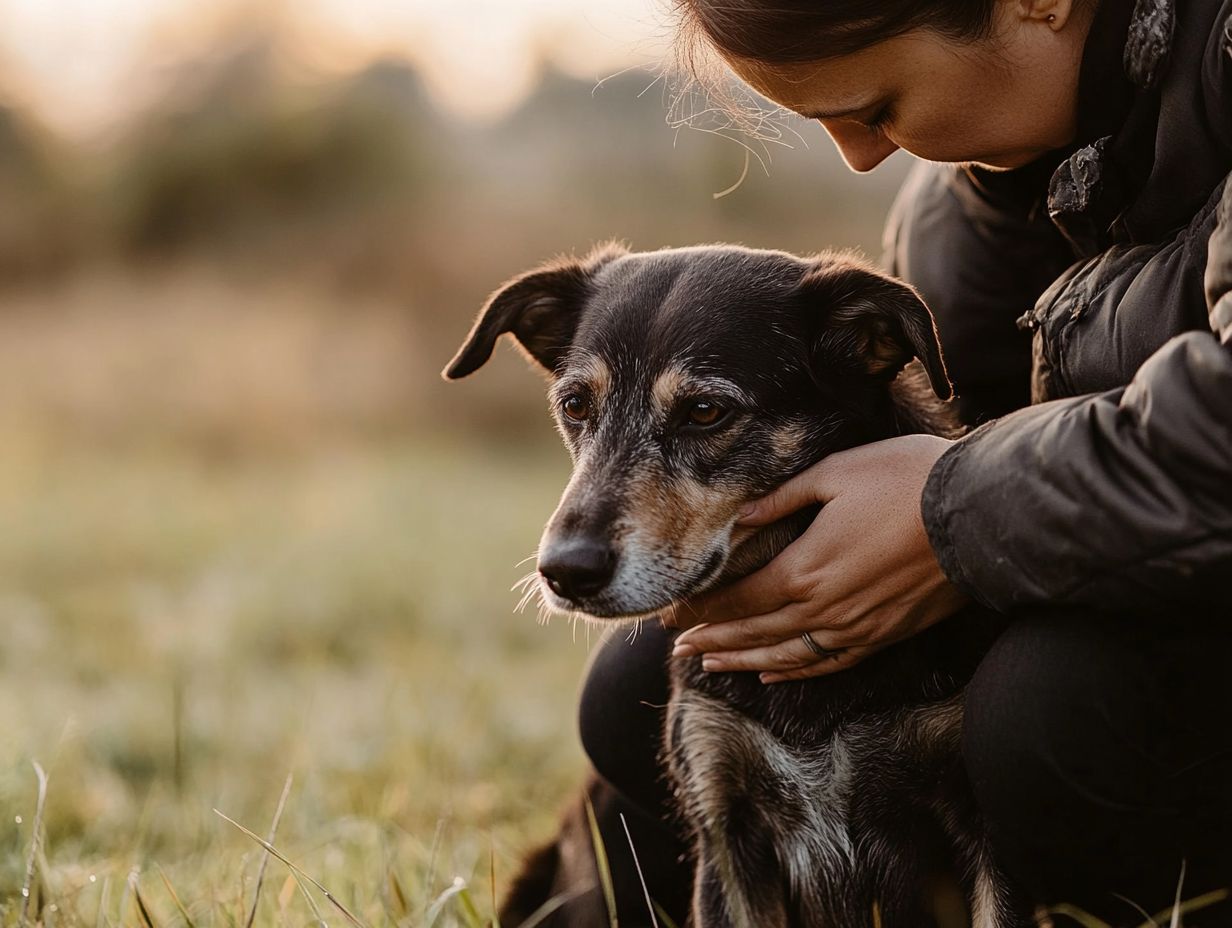
- The owner’s role in managing pet anxiety is crucial for the well-being of both the pet and the owner’s mental health, reflecting the emotional attachment that develops through pet ownership.
- Building a supportive environment and using techniques for calming and comforting can significantly reduce pet anxiety, benefiting both the owner’s emotional stability and the pet’s behavior.
- Pet owners should seek professional help and implement preventive measures to address pet anxiety effectively, recognizing the responsibility that comes with caring for pets.
The Impact of Pet Anxiety on Owners
Pet anxiety is a serious concern that impacts not just the well-being of the animal but also the mental health of their owners. Studies reveal that the emotional connection between pets and their human companions can amplify feelings of stress and anxiety, potentially resulting in emotional instability and a range of psychological challenges. Understanding the role of pet trainers in anxiety management can be beneficial for both pets and their owners.
This complex relationship underscores the urgent need to comprehend how pet behavior influences their owners, particularly among dog lovers who frequently form profound emotional bonds with their furry friends.
Understanding the Effects on Mental Health
Understanding how pet anxiety affects mental health is essential. It influences emotional stability and can lead to anxiety disorders among dog owners and other pet lovers. Exploring the role of veterinary professionals in pet anxiety can provide valuable insights and support.
Research indicates that while having pets can provide substantial emotional support helping to alleviate feelings of loneliness and stress the anxiety experienced by the pets themselves can complicate this dynamic. When you are attuned to your animal’s emotional needs, you are often better equipped to manage your own anxiety and depressive symptoms.
However, if your pet displays signs of distress, like excessive barking or destructive behavior, it can inadvertently amplify your feelings of helplessness and frustration, worsening your psychological challenges. Thus, while your pet can serve as a vital source of comfort, their mental well-being plays an equally crucial role in your emotional health.
Causes of Pet Anxiety
Pet anxiety can arise from many factors, often rooted in various environmental influences and triggers that result in behavioral issues. Understanding whether anxiety in pets is a behavioral issue is essential for effectively managing the anxiety, ultimately fostering a harmonious relationship between you and your beloved pet.
Environmental Factors and Triggers
Environmental factors and triggers significantly influence the development of pet anxiety. Loud noises, like thunderstorms or fireworks, can create an overwhelming atmosphere that leaves pets feeling stressed and frightened.
Introducing new household members can disrupt their sense of security, heightening their anxiety levels. Proper socialization, the process of getting pets used to new people and situations, is essential; when pets are gradually exposed to different environments, sounds, and social interactions from a young age, they become better equipped to manage these triggers.
By ensuring your pets encounter a variety of stimuli in a positive way, you can help reduce the chances of anxiety and promote more confident behavior.
Signs and Symptoms of Pet Anxiety
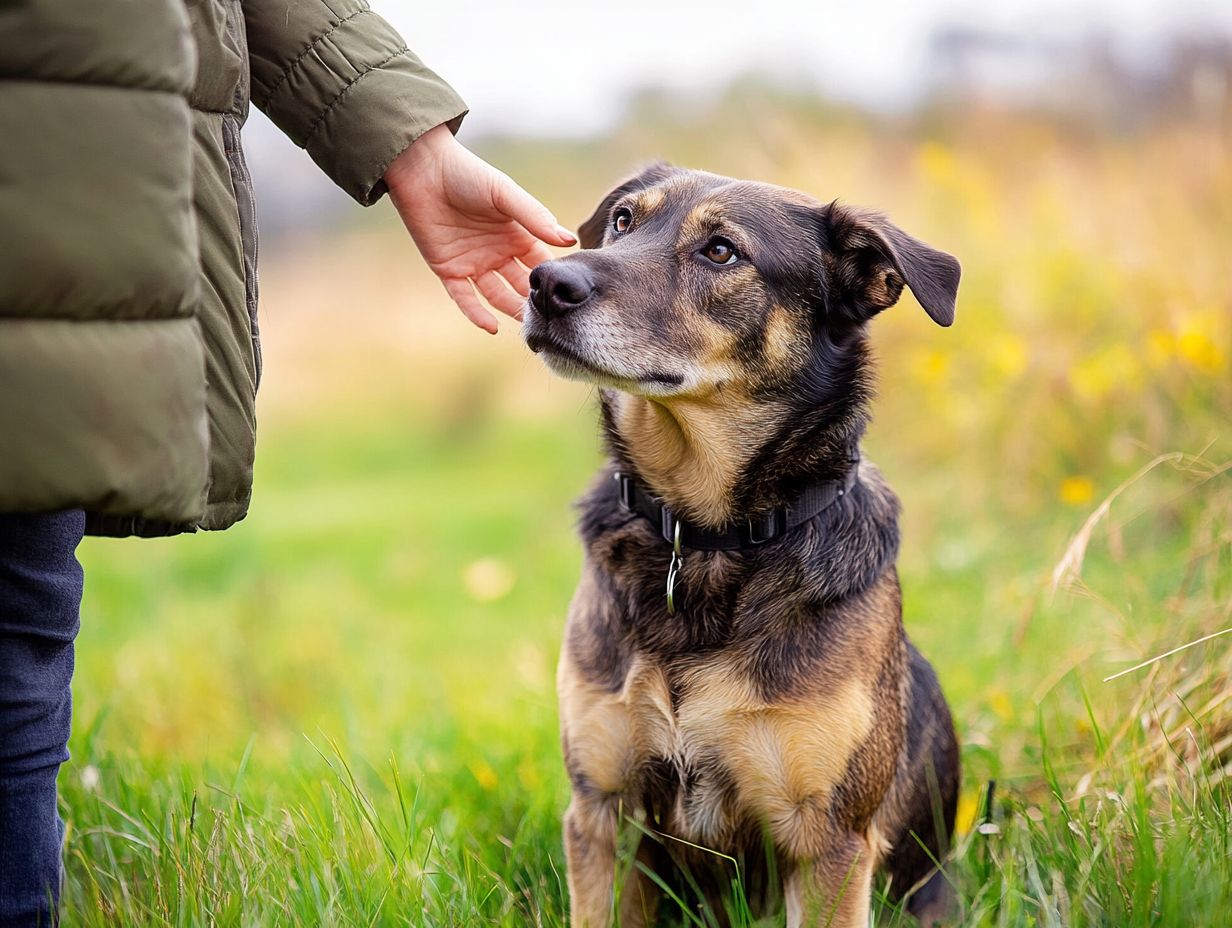
Recognizing the signs and symptoms of pet anxiety is crucial for you as a dog owner. It allows for timely help and support that your furry friend truly deserves, ensuring their mental well-being and emotional bond with you remains strong.
Behavioral changes can manifest in numerous ways, offering essential insights into your pet’s emotional state and the urgency of care needed.
Recognizing Behavioral Changes
Spotting behavioral changes in your pets is crucial; it could mean they need your help right now!
When your pet suddenly refuses food or starts overeating, those changes in eating habits might be clear indicators of distress. If you notice increased clinginess, it could mean your pet is seeking comfort and reassurance from you.
Pay attention to other behaviors too, like excessive barking, hiding, or destructive actions all of which can be cries for help. Noticing any shifts in demeanor or routines will help you spot these signs early, enabling you to provide care and support swiftly.
Watching your pet s body language is key, as it can offer valuable insight into their emotional state, helping you determine whether they need additional help or a consultation with a veterinarian.
The Owner’s Role in Managing Pet Anxiety
Your role in managing pet anxiety is absolutely crucial, underscoring your responsibility as an owner. Understanding what role your behavior plays can help you create a comfort zone that nurtures emotional well-being for both you and your furry companion.
Understand your pet’s needs to apply effective training and care strategies that significantly alleviate anxiety.
Building a Supportive Environment
Building a comfort zone is essential for addressing pet anxiety, as it profoundly affects the emotional health of both you and your furry companion.
Creating a serene oasis at home can work wonders in reducing stress and anxiety levels in your pet. Establishing a consistent daily routine is key, as it gives your pet a sense of security and predictability.
It s also important to designate safe spaces within your home where your pet can retreat when feeling overwhelmed. These areas should be cozy and filled with familiar items, like blankets or toys, that offer comfort.
Offering emotional support through gentle interactions and positive reinforcement can further enhance their sense of security, creating a nurturing atmosphere that promotes emotional well-being for both of you.
Techniques for Calming and Comforting Your Pet
Using techniques to calm and comfort your pet can significantly reduce anxiety levels and foster a healthier relationship between you and your furry friend.
By incorporating a variety of strategies into your daily routine, you can create a soothing environment that encourages relaxation. Simple training exercises, such as basic commands paired with positive reinforcement, are effective ways to build your pet’s confidence and sense of security, improving their emotional attachment to you. Additionally, using calming aids devices that emit calming scents used to ease anxiety like pheromone diffusers or anxiety wraps can offer immediate relief during stressful situations.
Gradually exposing your pet to anxiety-triggering stimuli can also play a vital role in easing fearful reactions over time. By thoughtfully combining these techniques, you create a solid framework for addressing anxiety and enhancing your pet’s overall well-being.
Seeking Professional Help for Pet Anxiety
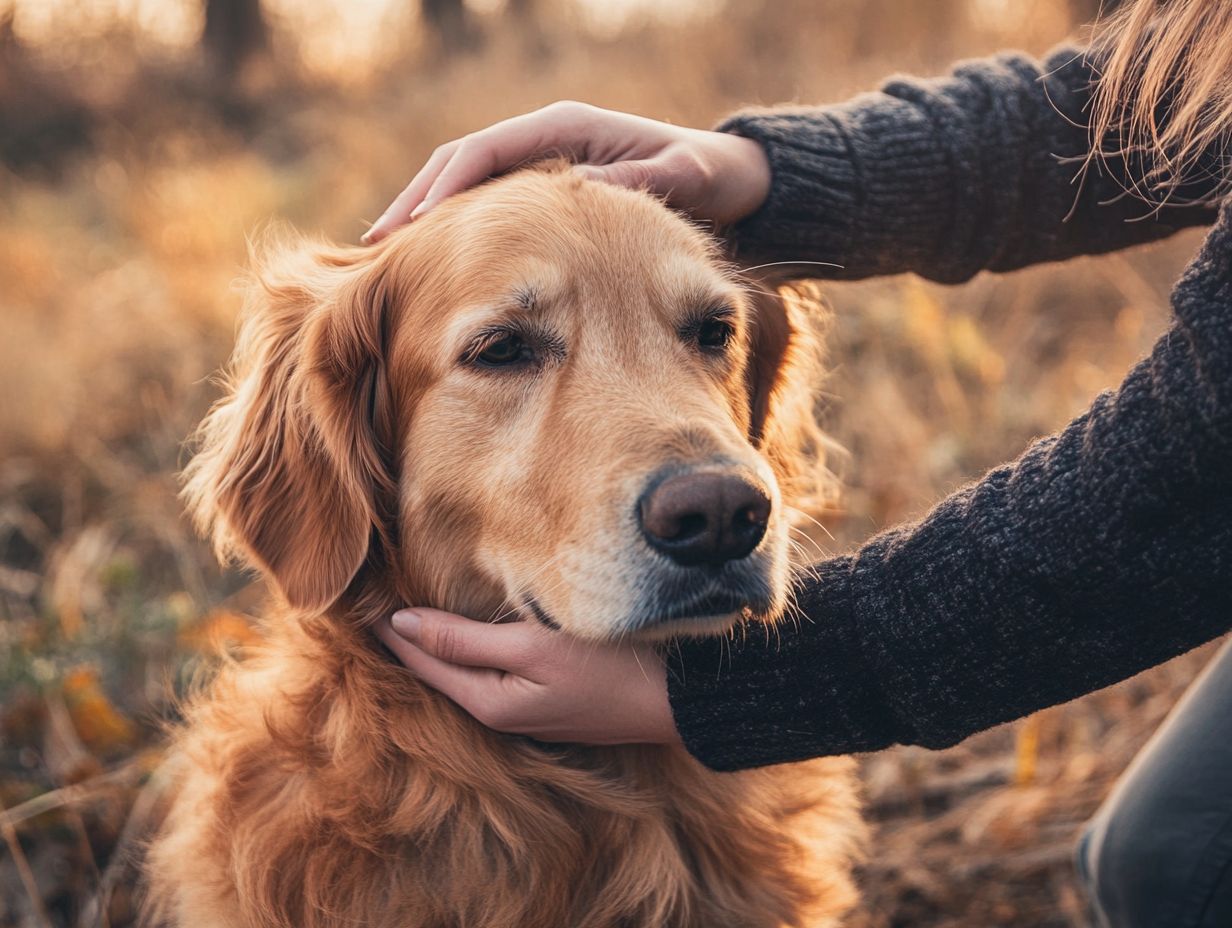
Seeking professional help for pet anxiety is often an essential step, especially when behavioral issues continue despite your best efforts.
By consulting with a veterinarian or an animal behaviorist, you can gain invaluable insights into the root causes of your pet’s anxiety and explore effective treatment options tailored to their needs.
Don’t wait start noticing these signs today to help your furry friend feel better!
When to Consult a Veterinarian or Animal Behaviorist
Recognizing when to consult a veterinarian or animal behaviorist is crucial for effectively addressing severe pet anxiety. Understanding the role of genetics in pet anxiety is especially important when the signs and symptoms begin to escalate, highlighting the responsibility of pet ownership.
For example, if your once-social pet suddenly becomes withdrawn or starts displaying destructive behaviors, it may signal the need for professional assistance. If you notice excessive barking, hiding, or aggression toward people or other pets, these alarming behaviors warrant immediate attention.
A veterinarian or animal behaviorist can assess these changes and recommend tailored treatments or training interventions to meet your pet s specific needs. With consistent follow-ups and behavior modification strategies, you can expect significant improvements in your pet’s well-being. This ultimately fosters a healthier and more harmonious living relationship for both of you.
Preventing Pet Anxiety
Preventing pet anxiety requires active steps that prioritize their mental well-being. By employing a range of strategies, you can significantly enhance your dog’s quality of life, ensuring they feel secure and content in their environment.
Tips for Reducing Stress and Promoting Mental Well-being in Pets
Implementing strategies to reduce stress and promote mental well-being in pets is crucial for cultivating a healthy and joyful companionship between you and your furry friend.
Focus on effective training methods, craft enriching environments, and engage in appropriate activities to significantly enhance your pet’s emotional stability and alleviate anxiety. Consider incorporating positive reinforcement techniques rewarding good behavior during training sessions. This not only strengthens your bond but also boosts your pet’s confidence.
Creating enriching environments think interactive toys and dedicated time for daily mental stimulation keeps your pet active and engaged. Maintain consistent routines to help ease anxiety. Introduce calming activities, like gentle walks or relaxation sessions, to ensure your pet remains relaxed and content in their surroundings. Supporting your pet s behavior and health is vital for a happier life together!
Frequently Asked Questions
How significant is the owner’s role in pet anxiety?
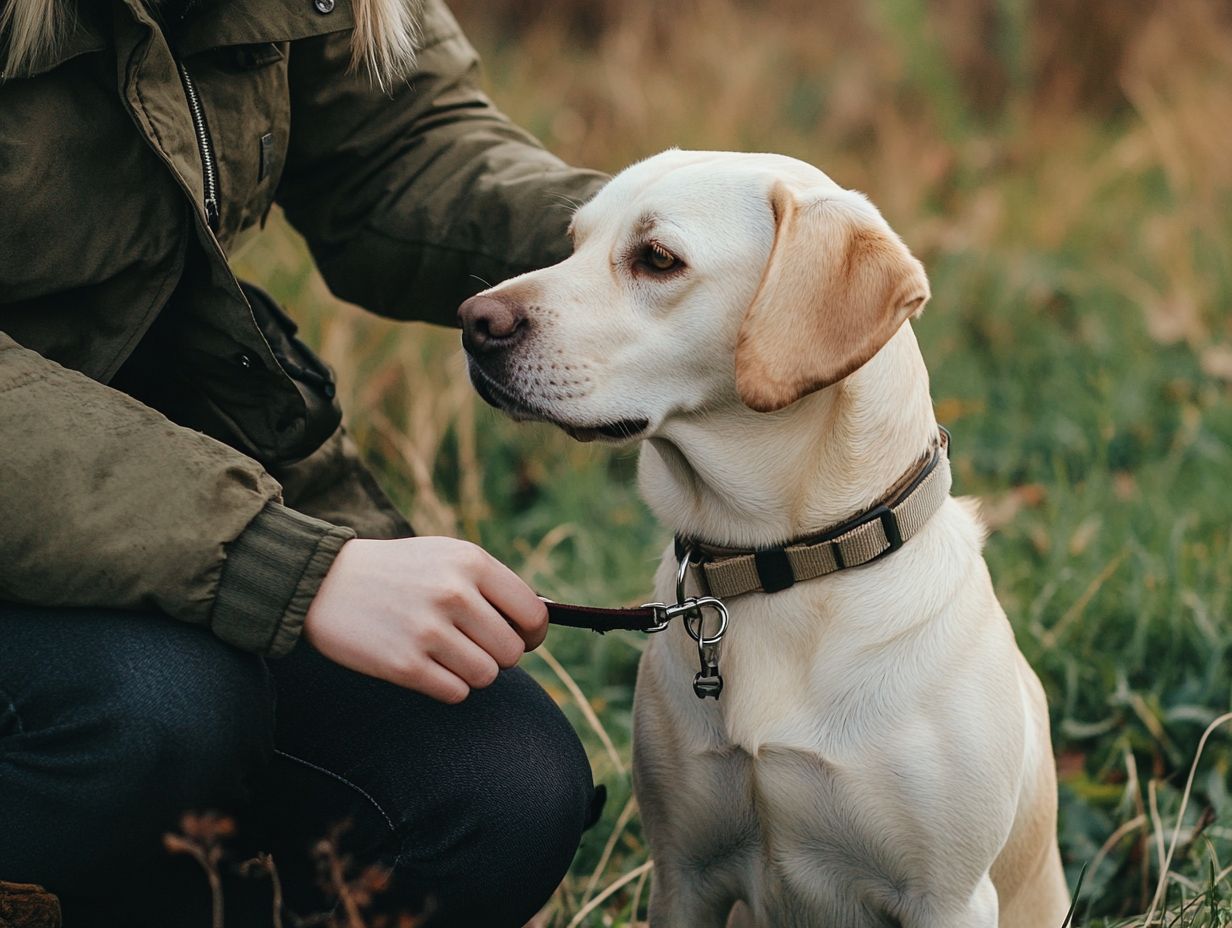
The owner’s role in pet anxiety greatly impacts their pet’s overall well-being. Owners are crucial in identifying and managing their pet’s anxiety, as well as understanding the role of family in pet anxiety consultations to create a safe and comforting environment for their pet.
What are some signs of pet anxiety?
Signs of pet anxiety include excessive barking or meowing, destructive behavior, restlessness, loss of appetite, and clinging to their owner.
How can an owner help their anxious pet?
Owners can help their anxious pets by creating a predictable and calm environment, providing mental and physical stimulation, and understanding key factors in understanding pet anxiety, as well as seeking professional help if needed.
Can an owner’s behavior contribute to their pet’s anxiety?
Yes, an owner’s behavior can contribute to their pet’s anxiety. If an owner is anxious or stressed, their pet may pick up on these emotions and become anxious themselves. Understanding best practices for pet owners and anxiety highlights how intertwined the owner-dog relationships can be.
Should an owner try to comfort their anxious pet?
Yes, an owner should try to comfort their anxious pet, but it’s important to do so in a calm and gentle manner. Understanding the influence of environment on pet anxiety can also help, as it allows you to avoid reinforcing their anxiety by giving in to their demands or coddling them excessively.
What steps can an owner take to prevent pet anxiety?
To prevent pet anxiety, owners can start socializing their pets at a young age, provide plenty of exercise and mental stimulation, and create a routine for their pets to follow. Seeking professional help can also be beneficial in preventing anxiety in pets.

